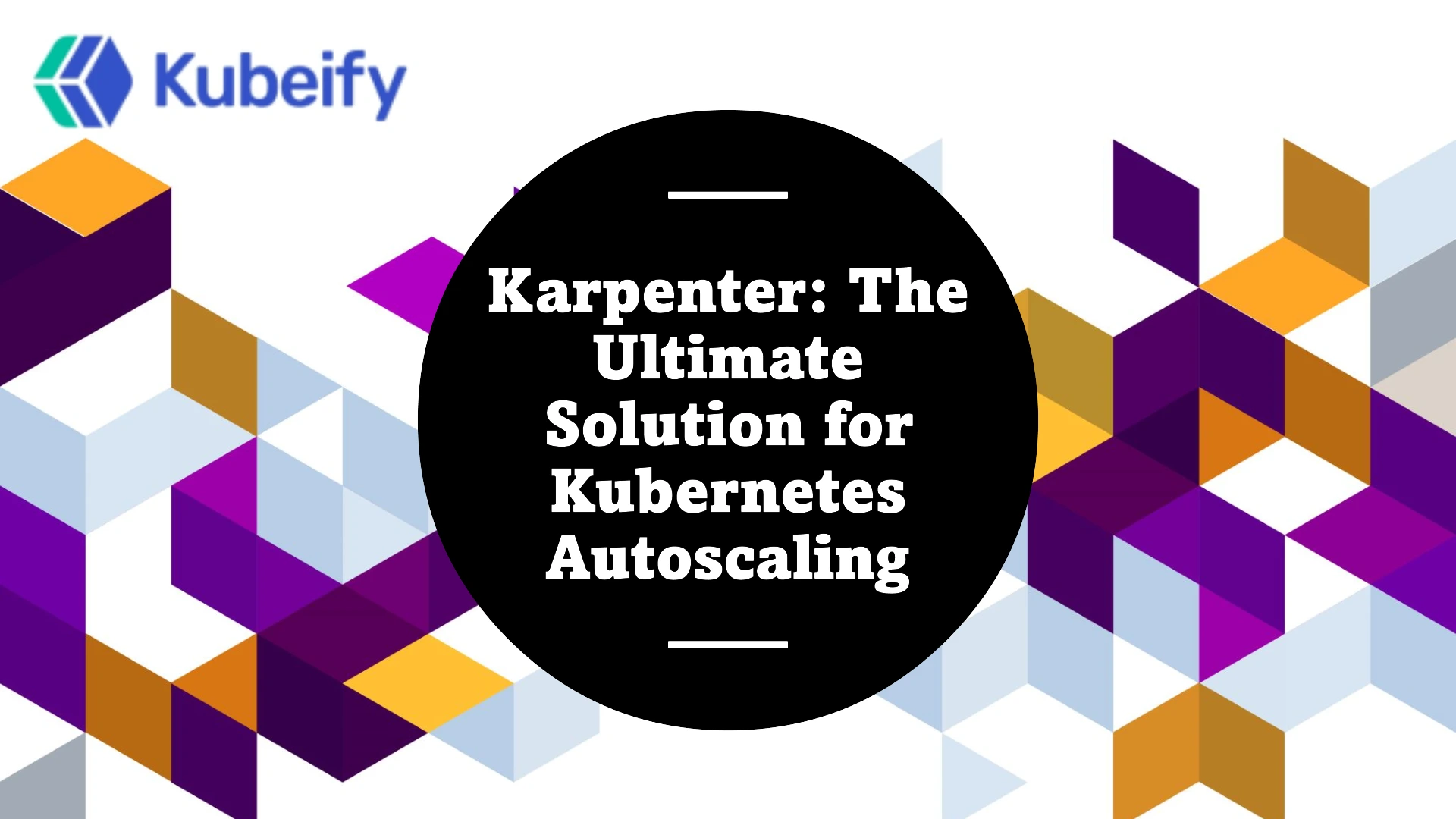AI Cloud
- Cloud Native Product Development
- Cloud Native FaaS
- Monolith to Microservices
- DevSecOps as a Service
- Kubernetes Zero Downtime

Kubernetes has become the de facto standard for container orchestration, offering unmatched scalability, flexibility, and efficiency. However, managing node autoscaling in Kubernetes has always been a challenge. Traditional Kubernetes Cluster Autoscaler (CA) works well in many cases but comes with limitations in speed, efficiency, and cost optimization.
As I worked on optimizing Kubernetes workloads for production environments, I needed a better, faster, and more cost-efficient autoscaling solution. That’s when I discovered Karpenter—an open-source, high-performance node provisioning tool for Kubernetes. In this blog, I’ll share why I decided to use Karpenter, how it differs from traditional autoscaling solutions, and the benefits it brings to Kubernetes infrastructure.
Before diving into Karpenter, let’s briefly discuss autoscaling in Kubernetes. There are three main types of autoscaling in a Kubernetes cluster:
While HPA and VPA focus on pod-level scaling, Cluster Autoscaler (CA) manages node-level scaling. The Cluster Autoscaler works by adding or removing nodes from the cluster based on pod scheduling requirements. However, it has several drawbacks that led me to consider Karpenter.
While the Cluster Autoscaler is widely used, it has some limitations:
These challenges led me to explore Karpenter, a Kubernetes-native autoscaler that overcomes many of these limitations.
Karpenter is an open-source high-performance autoscaler that provisions nodes on-demand to meet application needs dynamically. Unlike the Cluster Autoscaler, which works with autoscaling groups, Karpenter directly communicates with the cloud provider API to provision nodes.
It offers faster, more flexible, and cost-efficient scaling for Kubernetes workloads. Karpenter was developed by AWS but is cloud-agnostic and can work with other cloud providers as well.
After evaluating Karpenter for my Kubernetes infrastructure, I found several key advantages:
Integrating Karpenter into my AWS EKS cluster was straightforward. Here’s a high-level overview of the setup:
helm repo add karpenter https://charts.karpenter.sh/
helm repo update
helm install karpenter karpenter/karpenter --namespace karpenter --create-namespace
apiVersion: karpenter.k8s.aws/v1alpha5
kind: Provisioner
metadata:
name: default
spec:
provider:
instanceProfile: "KarpenterNodeInstanceProfile"
limits:
resources:
cpu: "1000"
ttlSecondsAfterEmpty: 30
requirements:
- key: "node.kubernetes.io/instance-type"
operator: In
values: ["t3.medium", "m5.large", "c5.large"]
After using Karpenter in production, I can confidently say that it outperforms the traditional Cluster Autoscaler in terms of:
✅ Speed – New nodes spin up within seconds, preventing pod scheduling delays.
✅ Efficiency – Nodes are provisioned based on actual workload needs, reducing wasted resources.
✅ Cost Savings – Spot instance optimization leads to lower cloud bills.
✅ Simplicity – No more managing complex autoscaling groups or node pools.
If you’re running Kubernetes clusters in the cloud and want a smarter, faster, and more cost-effective autoscaling solution, Karpenter is a game-changer.
If you:
✅ Run cloud-based Kubernetes clusters (AWS, Azure, GCP)
✅ Need fast and efficient autoscaling
✅ Want to reduce cloud costs with Spot Instances
✅ Prefer simplified autoscaler configurations
Then YES! Karpenter is absolutely worth trying.
I’d love to hear your thoughts! Have you used Karpenter in your Kubernetes clusters? Let’s discuss in the comments!
🔹 #Kubernetes #DevOps #Karpenter #CloudNative #AWS #EKS #Autoscaling

Kubeify's team decrease the time it takes to adopt open source technology while enabling consistent application environments across deployments... letting our developers focus on application code while improving speed and quality of our releases.
– Yaron Oren, Founder Maverick.ai (acquired by OutboundWorks)
Let us know what you are working on?
We would help you to build a
fault tolerant, secure and scalable system over kubernetes.
